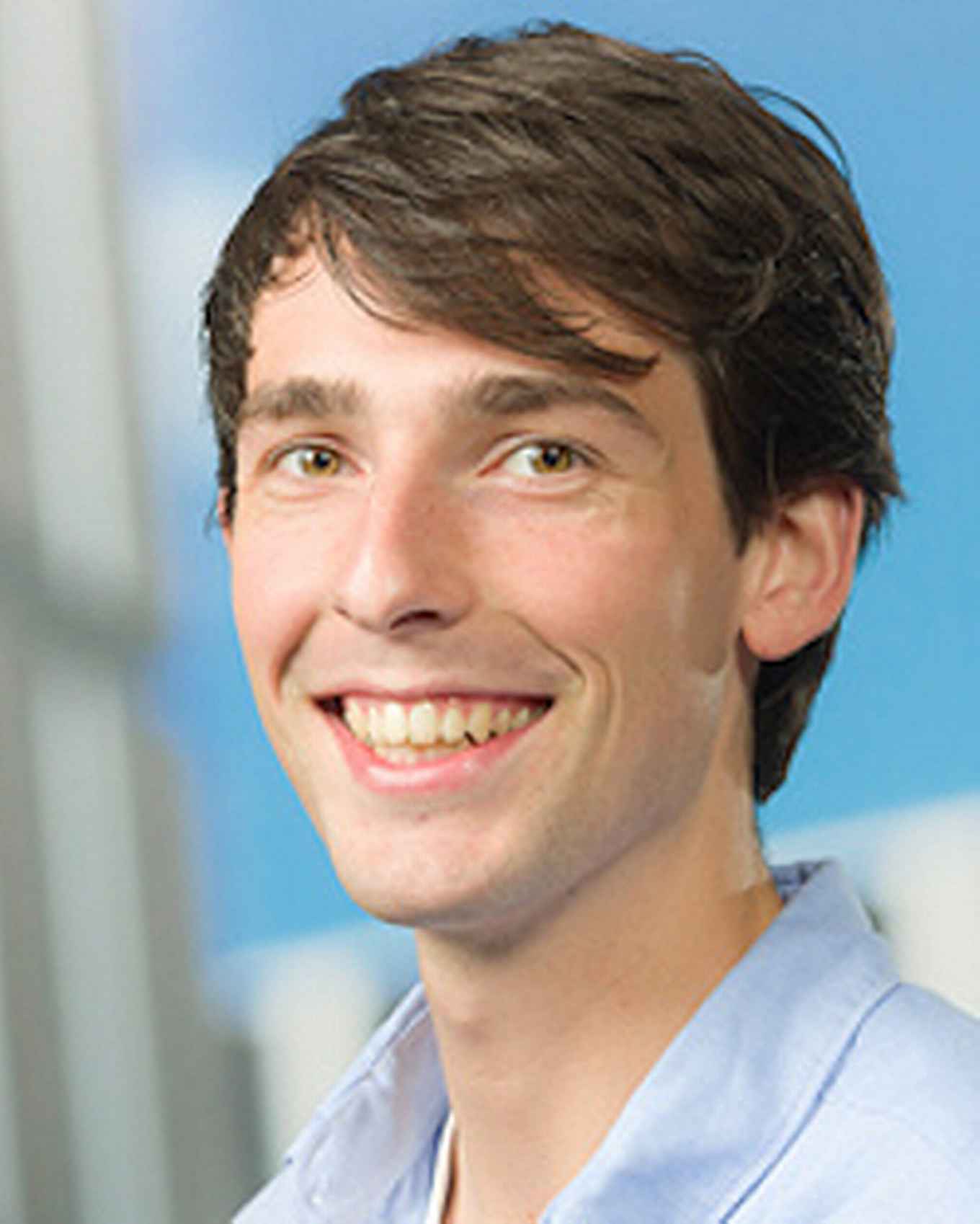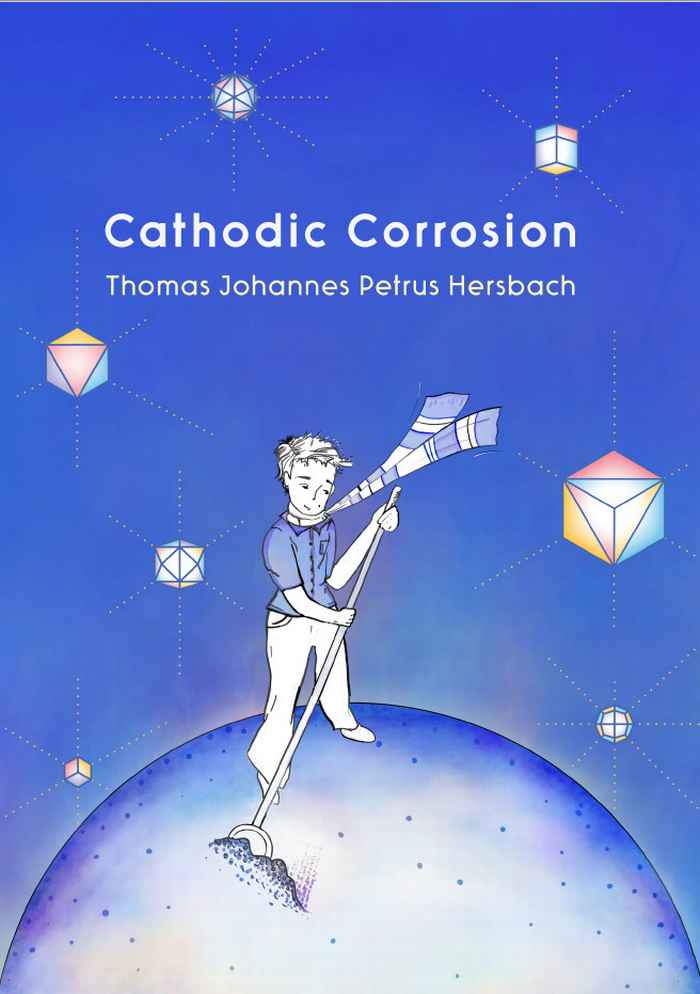Dick Stufkens Prijs 2019 awarded to electrochemist Thom Hersbach
Holland Research School of Molecular Chemistry honours innovative PhD-research
9 October 2019

Thom Hersbach performed his PhD research with Marc Koper, Professor in Fundamental Surface Science at Leiden University. A phenomenon first observed by the great German chemist Fritz Haber at the end of the 19th century, cathodic corrosion was 'rediscovered' at the Koper research group in Leiden in 2011. It refers to the etching, restructuring and degradation of metallic electrode materials under highly reductive conditions, that is under very negative applied potentials. The PhD assignment of Thom Hersbach was to uncover what exactly happens at the onset of cathodic corrosion, and which chemistry is involved.
With his seminal work, Thom Hersbach has written a new chapter in the book of corrosion science, and it will probably feature as such in many future Corrosion Handbooks. He established that cathodic corrosion can be detrimental to many metals, notably to platinum. He discovered that the deterioration of this precious metal starts at surprisingly low cathodic potentials, results in intriguing anistropic etching, and involves the formation of complex metal hydrides. He used this knowledge to improve platinum's catalytic activity for the conversion of oxygen to water, an important reaction in fuel cells present in hydrogen-powered vehicles.
Elusive metal anions
The more well-known and well-studied corrosion phenomenon is that of anodic corrosion. It involves the oxidation of metals: they lose electrons so that they can dissolve or convert to compounds like metal oxides (e.g., in the case of iron, rust). This can have catastrophic consequences to structures like bridges or oil pipelines. Fortunately, anodic corrosion can be prevented by “cathodic protection” which entails lowering a metal’s potential to stabilize it in its un-oxidized state. The general assumption was that this protection held at any sufficiently negative potential. However, in 2011 the Leiden chemists established that at more negative potentials, beyond those of the cathodic protection, metals can again start to corrode. This has now been confirmed in detail by the research of Thom Hersbach. Furthermore, since cathodic corrosion would not involve the loss, but the gain of electrons, it was hypothesized that this electron gain would involve the creation of exotic yet very unstable metal anions. It is the highlight of Thom Hersbach's research that he has indeed been able to detect the formation of PtH62- anions during the cathodic corrosion of platinum. This involved repeated sophisticated in-situ X-ray absorption experiments at the synchrotron at Stanford University (U.S.). The discovery considerably advanced the fundamental understanding of cathodic corrosion.
Independence and perseverance
The jury of the Stufkens prize 2019 rewards the thesis of Thom Hersbach for its surprising findings, its quality and its broad scope. It stands out as a milestone in the understanding of cathodic corrosion, as well as in its possible applications, such as in catalysis. The jury appreciates his high degree of independence as a researcher and the great perseverance he displayed during the X-ray measurements at the Stanford synchrotron, which required a redesign of the electrochemical cell and a second round of experiments. The jury also notes that for 2019 the number of applications for the Stufkens prize was very high, on a wide variety of subjects, and on average of high quality. Nonetheless, the jury was able to arrive at a unanimous nomination of the top three, after which Thom Hersbach was unanimously voted as the winner on the basis of his originality and productivity.

Thom Hersbach conducted his research at the Leiden Institute of Chemistry. His dissertation is entitled 'Cathodic corrosion'. The defence took place on December 19, 2018, with Prof. Marc Koper as promotor and Dr Amanda C. Garcia and Dr Federico Calle-Valejo as co-promotors. Hersbach currently is a postdoctoral fellow at the University of Texas at Austin with the Materials Chemistry group of Prof. Richard M. Crooks.
Download the thesis of Thom Hersbach at the Leiden Repository.
Festive anniversary symposium
The Dick Stufkens Prize is awarded annually to the best thesis defended in the period July 1 to July 1 of the next year by a PhD student belonging to the Holland Research School of Molecular Chemistry (HRSMC). The prize – first awarded in 2008 - consists of a certificate and an amount of 2000 euro.
On 14 November, Prof. Ronald Hage will present the Dick Stufkens Prize 2019 to Thom Hersbach during the celebratory HRSMC lustrum symposium at the KIT Royal Tropical Institute in Amsterdam. There, Thom Hersbach will give a lecture on his PhD research and various HRSMC PhD students and staff members will present lectures and posters. In celebration of the HRMSC 25th anniversary, distinguished guest speakers have been invited, among which Nobel laureate Prof. Ben Feringa (University of Groningen), Prof. Jeffrey R. Long (University of California, Berkeley), Prof. Thomas Ebbesen (University of Strasbourg) , Prof. Jens K. Nørskov (Technical University of Denmark) and our distinguished staff member Prof. Michel Orrit. The symposium is open for non-HRSMC members. For further information please consult the website.
Register for the HRSMC Symposium 2019 at the website.
About HRSMC
The Holland Research School of Molecular Chemistry was founded in 1994 and has been accredited by the Royal Academy of Arts and Sciences (KNAW). The research school combines experimental and theoretical groups working on molecular chemistry and physics from the Universiteit van Amsterdam, the Vrije Universiteit Amsterdam and the Universiteit Leiden. Apart from creating the appropriate conditions for further collaboration between the participating groups, the school also provides an internationally highly acclaimed teaching program for PhD students. Prof. Dick Stufkens†, scientific director during the 1997-2001 period, has been one of the driving forces behind the HRSMC. His efforts have been instrumental to the strong international reputation of the HRSMC.